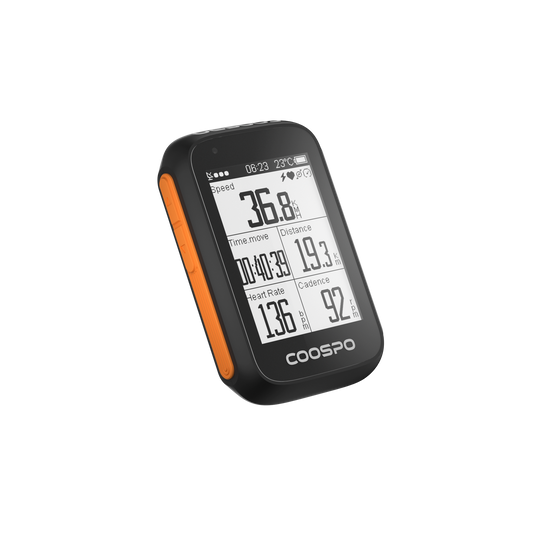Fréquence cardiaque pour brûler les graisses : qu'est-ce que c'est et comment trouver la vôtre
Brûler des graisses en faisant de l'exercice ne se résume pas à fournir beaucoup d'efforts ; il est tout aussi important d'optimiser son entraînement. Une stratégie clé consiste à se concentrer sur sa zone de fréquence cardiaque optimale pour la combustion des graisses. Cet article explique ce qu'est cette zone, comment la déterminer, comment contrôler sa fréquence cardiaque pendant l'effort et d'autres facteurs importants qui influencent la perte de graisse.
Calculer votre zone de combustion des graisses
Pour déterminer votre zone de combustion des graisses, vous aurez besoin de deux équations. La première calculera la limite inférieure, et la seconde déterminera la limite supérieure de cette zone.
Votre zone de fréquence cardiaque optimale pour brûler les graisses se situe généralement entre 50 % et 70 % votre fréquence cardiaque maximale.
-
limite inférieureFréquence cardiaque maximale × 0,50
-
Limite supérieureFréquence cardiaque maximale × 0,70
Qu'est-ce qu'une zone de combustion des graisses ?
La zone de combustion des graisses correspond à une plage de fréquence cardiaque où le corps utilise principalement les graisses comme source d'énergie, plutôt que les glucides. Cela se produit généralement lors d'un exercice d'intensité modérée, soit environ 60 à 70 % de la fréquence cardiaque maximale (FCM). À ce niveau, le corps puise son énergie principalement dans les graisses.

S'il peut sembler logique de s'entraîner plus intensément pour perdre plus de graisse, des études montrent que des séances d'entraînement à faible intensité, dans la zone de combustion des graisses, peuvent en réalité favoriser une perte de graisse durable. Cela est particulièrement vrai pour les débutants ou ceux qui cherchent à développer leur endurance.
Déterminer votre fréquence cardiaque maximale
La fréquence cardiaque maximale correspond au nombre maximal de battements que votre cœur peut atteindre en une minute, généralement lors d'un effort physique ou en situation de stress. Vous aurez besoin de cette valeur pour déterminer votre zone de combustion des graisses, comme indiqué dans les équations ci-dessus.
Il existe des débats parmi les experts quant à la meilleure façon de déterminer la fréquence cardiaque maximale. La formule de Fox est une méthode courante. Bien qu'elle puisse être utile, elle ne tient pas compte des différences individuelles, notamment de facteurs tels que le sexe et le niveau de forme physique, qui peuvent influencer la fréquence cardiaque maximale.
Néanmoins, c'est la méthode recommandée par l'American Heart Association. La formule de Fox se calcule comme suit :
Fréquence cardiaque maximale (FCM) = 220 − votre âge
Par exemple, si vous avez 40 ans :
Fréquence cardiaque maximale (FCM) = 220 − 40 = 180 bpm
Votre zone de combustion des graisses serait :
60 % de la FPM = 180 × 0,60 = 108 bpm 70 % de la FPM = 180 × 0,70 = 126 bpm
Ainsi, une personne de 40 ans devrait viser à maintenir sa fréquence cardiaque entre 108 et 126 bpm pour rester dans la zone de combustion des graisses.
Remarque : Des méthodes plus précises, comme la formule de Karvonen ou les analyses en laboratoire, tiennent compte de votre fréquence cardiaque au repos et de votre condition physique. Toutefois, la méthode 220-âge est couramment utilisée à titre indicatif.
Zones de combustion des graisses selon l'âge
Ce tableau présente les zones de fréquence cardiaque optimales pour brûler les graisses en fonction de l'âge. Si vous ne souhaitez pas effectuer de calculs précis, vous pouvez utiliser ce tableau pour déterminer une fréquence cardiaque cible générale favorisant la combustion des graisses.
| Âge | Zone estimée de combustion des graisses |
|---|---|
| 20 ans | 128–152 bpm |
| 30 ans | 122–144 bpm |
| 35 ans | 118–141 bpm |
| 40 ans | 115–137 bpm |
| 45 ans | 112–133 bpm |
| 50 ans | 109–129 bpm |
| 55 ans | 106–125 bpm |
| 60 ans | 102–122 bpm |
| 65 ans | 99–118 bpm |
| 70 ans | 96–114 bpm |
Surveillance de la fréquence cardiaque pendant l'entraînement
Pour optimiser les séances d'entraînement brûle-graisses, il est crucial de surveiller sa fréquence cardiaque.
Outils à utiliser :
Moniteurs de fréquence cardiaque (HRM) : ceintures pectorales (comme les Moniteur de fréquence cardiaque Coospo) offrent des mesures précises en temps réel.
montres connectées &et ; Traqueurs d’activité physique : Pratiques, mais légèrement moins précis pour les entraînements intensifs.
Manuellement (vérification du pouls) : Trouvez votre pouls au poignet ou au cou et comptez les battements pendant 15 secondes × 4.

✅ Le Moniteur de fréquence cardiaque Coospo est un outil fiable et abordable pour suivre votre fréquence cardiaque dans différentes zones. Connecté à une application de fitness ou à un compteur de vélo, il vous aide à rester dans votre plage d'intensité souhaitée, optimisant ainsi vos entraînements.
Exercices pour brûler les graisses
Les sources d'énergie utilisées pendant l'exercice physique dépendent de l'intensité de l'activité. Lors d'une activité moins intense, le corps puise davantage d'énergie dans les graisses.
Voici quelques exemples d'exercices de faible intensité :
Marche
Vélo
Natation

Si vous hésitez sur le niveau d'intensité d'une activité, vous pouvez faire le test de la parole. La plupart des gens peuvent parler et chanter pendant une activité de faible intensité. Si vous pouvez parler mais pas chanter, l'activité peut être considérée comme d'intensité modérée.
Lors d'un effort physique intense, la plupart des gens sont incapables de prononcer une phrase complète sans s'interrompre pour reprendre leur souffle.
Si vous souhaitez brûler des graisses, recherchez un exercice de faible intensité que vous appréciez et que vous pouvez pratiquer régulièrement, la plupart des jours de la semaine.
Il est important de comprendre qu'un exercice à faible intensité brûle moins de calories par minute qu'un entraînement à haute intensité. Si vous manquez de temps pour faire du sport, une séance plus intense peut vous aider à brûler plus de calories, à condition d'être en bonne santé et capable de supporter cet effort.
Autres éléments à prendre en compte lors d'une tentative de perte de poids
S'entraîner à une intensité suffisante pour brûler des graisses peut aider à les éliminer, mais la perte de poids dépend surtout de la capacité à brûler plus de calories qu'on en consomme. Voici d'autres points importants à prendre en compte :
Apport calorique
Pour perdre du poids, il faut brûler plus de calories qu'on en consomme. Même en faisant de l'exercice à une intensité suffisante pour brûler des graisses, manger trop peut anéantir tous vos efforts.
Fibres insolubles
Les fibres insolubles facilitent la digestion et procurent une sensation de satiété. Les aliments comme les céréales complètes, les légumes verts à feuilles et les graines peuvent vous rassasier plus longtemps et ainsi contribuer à prévenir les excès alimentaires.

Une étude de 2015 publiée dans les Annals of Internal Medicine a montré qu'une simple augmentation de la consommation de fibres entraînait une perte de poids, même sans modification stricte du régime alimentaire.
Conditions de santé
Des affections comme l'hypothyroïdie, le SOPK ou la résistance à l'insuline peuvent rendre la perte de graisse plus difficile.Si vous faites régulièrement de l'exercice mais que vous ne constatez aucun changement, il est conseillé de consulter un professionnel de la santé afin de vérifier s'il existe des problèmes sous-jacents.
Métabolisme de base (MB)
Votre métabolisme de base (MB) correspond au nombre de calories que votre corps utilise lorsque vous n'avez aucune activité. Il est influencé par votre âge, votre masse musculaire et votre patrimoine génétique. En développant votre masse musculaire maigre grâce à la musculation, vous pouvez augmenter votre MB, ce qui vous permet de brûler plus de calories tout au long de la journée.











